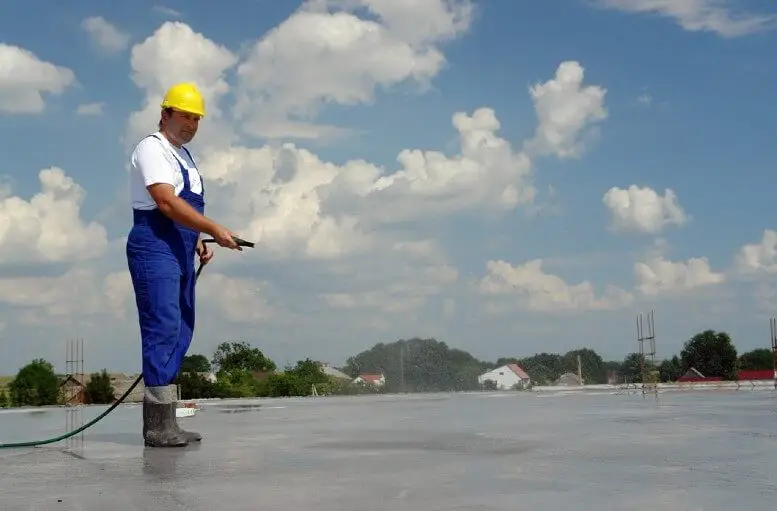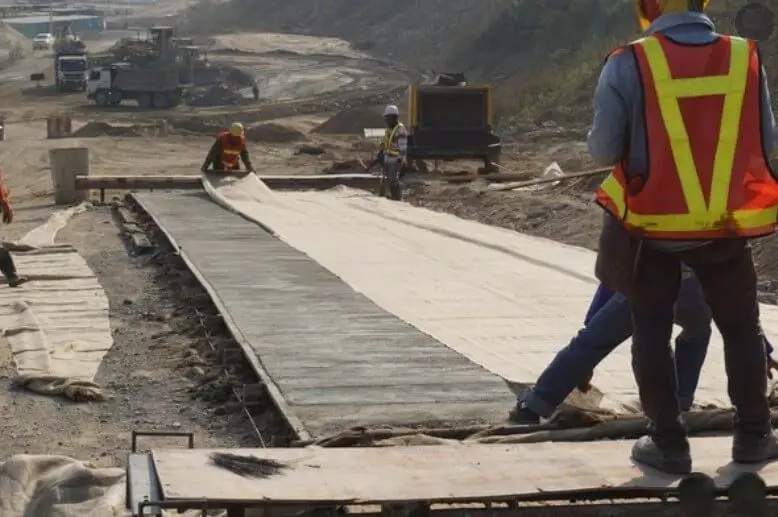Table of Contents
What is the Method Statement for Curing Concrete?
A Method Statement for Curing Concrete outlines the specific procedures and steps to be followed during the concrete curing process to ensure that the concrete achieves its desired strength, durability, and other required properties.
Concrete curing is a crucial process that aims to achieve specified strength and durability parameters for concrete. The curing methods employed on a construction project site can vary depending on factors such as the type of concrete, its exposure, location, and design mix.
It is essential to adhere to project specifications and obtain approval from the consultant before adopting any specific curing method.
Method One: Keeping the Surface of Concrete Moist
a. Ponding
Ponding is a common method used for horizontal surfaces, like floor slabs. In this approach, the concrete surface is kept continuously moist by creating ponds of water over it. The water used for ponding should be of potable quality and free from dissolved salts.
Ponding helps maintain a uniformly moist environment, allowing the concrete to cure properly and gain strength and durability.

b. Spraying/Sprinkling Water
This method involves sprinkling water onto the concrete surface to keep it moist. It is suitable for both horizontal and vertical surfaces, including inaccessible areas. Care should be taken to use water with a temperature similar to that of the concrete.
Sprinkling water effectively prevents the concrete from drying out during the crucial curing period.

c. Damp Sand or Hessian
Using wet hessian or sand is another method to keep the concrete surface damp. However, this approach requires constant vigilance to ensure the hessian or sand remains wet throughout the curing process.
It can be challenging to maintain the required dampness consistently, and there is a risk of staining. Therefore, this practice is best avoided in favor of more reliable curing methods.
Method Two: Prevent Loss of Moisture from the Concrete
a. Polythene Sheeting
Covering the concrete with polythene sheeting is a simple yet effective way to retain moisture. The sheeting should be placed over the concrete as soon as possible, ensuring it is in direct contact with the surface.
Care must be taken to secure the edges and corners of the sheeting to prevent wind and draughts from drying out the concrete. Polythene sheeting helps in creating a controlled curing environment, especially in cases where the concrete is exposed to sunlight or high winds.
b. Spraying Curing Compounds on a Curing Membrane
Curing compounds can be sprayed onto the concrete surface using a hose spray. This method is applicable to both horizontal and vertical surfaces. It is essential to follow the manufacturer’s instructions when using curing compounds.
The compounds should not be applied to dry surfaces, as they might be absorbed, causing staining or discoloration. If the surface has dried out, wetting it with clean water before spraying the compound is necessary.
Curing compounds should not be sprayed on top of water, and safety precautions must be taken while handling them.
c. Leaving the Formwork in Place
Formwork, when left in place after pouring concrete, acts as a protective barrier, preventing moisture loss during the initial curing period.
This allows curing to proceed effectively. However, exposed top surfaces of the concrete may still require normal curing methods to ensure uniform strength and durability.
Curing of Exposed Concrete
Concrete surfaces that will be permanently exposed to weather conditions require extra care during curing, typically for at least seven days.
Properly cured exposed concrete becomes more impermeable and better able to withstand wetting and drying cycles, enhancing its long-term appearance by preventing the accumulation of dirt.
Paving and Floor Slab Curing
For paving and floor slabs, it is essential to start the curing process soon after the water sheen on the surface disappears. Applying a curing membrane with a hand-operated hose spray is a convenient method for small paved areas.
The curing membrane should reflect the sun’s rays to prevent excessive evaporation. Care must be taken to apply a uniform coat of the membrane, especially in windy conditions, to avoid uneven curing.
Health and Safety Precautions
Use appropriate personal protective equipment (PPE) when handling curing compounds or operating equipment.
Ensure safe handling and storage of curing compounds.
Follow safety guidelines and manufacturer’s instructions for the use of curing compounds.
Record Keeping
Maintain a detailed record of the concrete curing process, including the method used, duration of curing, and any observations or deviations from the Method Statement.
Record the curing details in the approved format and submit it to the Project Manager for documentation.
References
Refer to project specifications and manufacturer’s instructions for specific requirements and guidelines related to concrete curing.
Wrapping Up
In summary, concrete curing is a critical process that significantly impacts the strength and durability of the concrete. By using appropriate curing methods based on the type, exposure, location, and design mix of the concrete, construction professionals can ensure that the concrete attains its intended properties and performs well over time.
Careful adherence to project specifications and manufacturer’s instructions for curing compounds is essential to achieve optimal results during the curing process.
tag: # Method Statement for Curing Concrete

